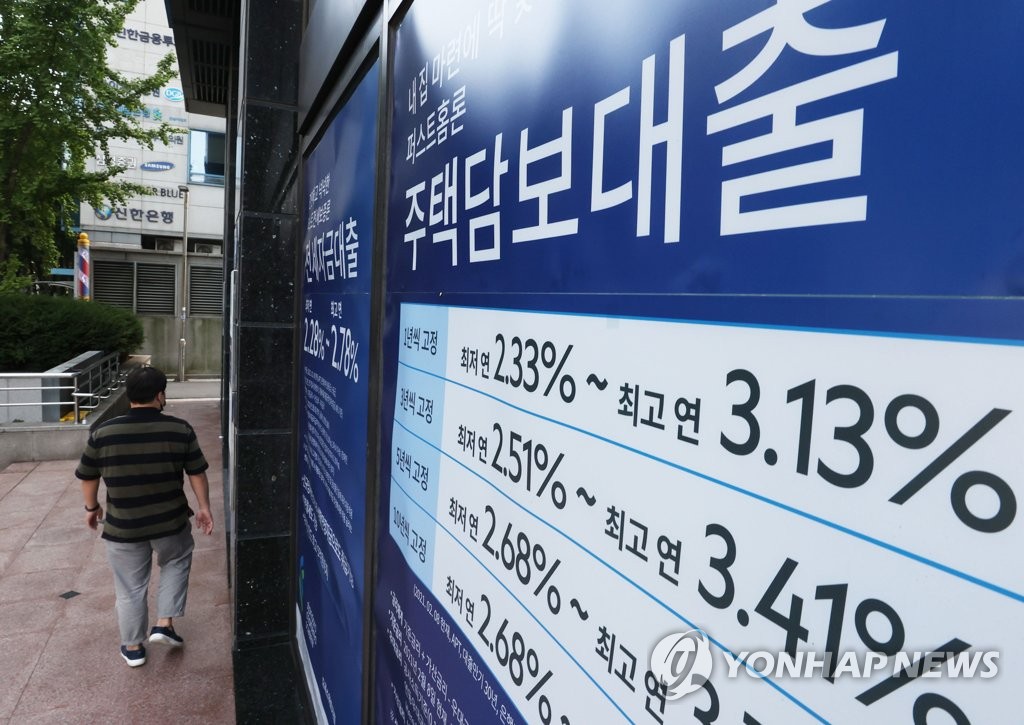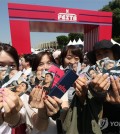- California Assembly OKs highest minimum wage in nation
- S. Korea unveils first graphic cigarette warnings
- US joins with South Korea, Japan in bid to deter North Korea
- LPGA golfer Chun In-gee finally back in action
- S. Korea won’t be top seed in final World Cup qualification round
- US men’s soccer misses 2nd straight Olympics
- US back on track in qualifying with 4-0 win over Guatemala
- High-intensity workout injuries spawn cottage industry
- CDC expands range of Zika mosquitoes into parts of Northeast
- Who knew? ‘The Walking Dead’ is helping families connect
Banks’ household lending rate hits 10-yr high in September amid BOK’s tightening
Banks’ rates charged on household loans hit a 10-year high in September, raising worries that the central bank’s aggressive monetary tightening leads to worsening strains on many indebted people, data showed Friday.
According to the data from the Bank of Korea (BOK), banks’ household lending rate came to 5.15 percent per annum on average last month, up 0.39 percentage point from a month earlier.
It was the highest level since July 2012, when the corresponding figure rose to 5.20 percent.
The rise appears to be in line with the BOK’s move to hike its policy rate as part of efforts to rein in soaring inflation pressure. The policy rate serves as a benchmark for borrowing costs in the market.
The BOK has hiked the rate by a combined 250 basis points since August last year, including the second-ever big-step increase of 50 basis points early this month. It is expected to deliver another rate hike when it holds this year’s last rate-setting meeting next month.
Banks’ mortgage lending rate rose 0.44 percentage point on-month to 4.79 percent in September, a level not seen since May 2012 when it stood at 4.85 percent.
The rate of their unsecured lending to households also climbed 0.38 percentage point over the same period to 6.62 percent, the highest since March 2013.
Meanwhile, the rate banks charged on deposits also rose 0.3 percentage point to 3.38 percent. This marked the highest since July 2012, when it was at 3.43 percent.
The spread on banks’ lending and deposit rates fell 0.21 percentage point to 1.33 percent in September, the lowest since July when it fell to 1.28 percent, the data showed.
The spread decline came as financial authorities have ramped up monitoring on banks’ rate levels amid criticisms that they are quick to reflect the central bank’s monetary tightening in lending but slow to apply it on savings.
Banks’ rates charged on loans to businesses inched up 0.20 percentage point to 4.66 percent in September, the data showed. It represented the highest in nearly nine years since December 2013.
In particular, rates on lending to large businesses stood at 4.38 percent, up 0.15 percentage point from a month earlier, while those for small and medium-sized enterprises rose 0.11 percentage point to 4.87 percent, according to the data.

This photo, taken Oct. 3, 2021, shows signs about a bank’s loan programs that were put up on the exterior of a lender in Seoul. South Korea’s financial regulator is reviewing further tightening rules on household loans in a bid to curb the fast growth of household debt. (Yonhap)












